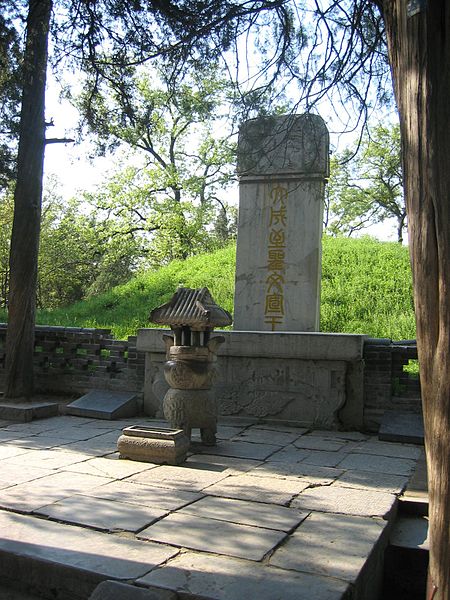According to Sima Qian, Confucius said: "The disciples who received my instructions, and could themselves comprehend them, were seventy-seven individuals. They were all scholars of extraordinary ability." It was traditionally believed that Confucius had three thousand students, but that only 72 mastered what he taught. The following is a list of students who have been identified as Confucius's followers. Very little is known of most of Confucius's students, but some of them are mentioned in the Analects of Confucius. Many of their biographies are recorded in the Sima Qian's Shiji. The Six Arts were practiced by the 72 disciples.
A tablet in honor of Yan Hui ("The Continuator of the Sage, Duke of Yanguo") in his temple in Qufu
A symbolic tomb of Min Ziqian, with two ancient-looking bixi turtles
Confucius, born Kong Qiu (孔丘), was a Chinese philosopher of the Spring and Autumn period who is traditionally considered the paragon of Chinese sages, as well as the first teacher in China to advocate for mass education. Much of the shared cultural heritage of the Sinosphere originates in the philosophy and teachings of Confucius. His philosophical teachings, called Confucianism, emphasized personal and governmental morality, correctness of social relationships, justice, kindness, sincerity, and a ruler's responsibilities to lead by virtue.
Tang-era depiction of Confucius by Wu Daozi (685–758)
Tomb of Confucius in Kong Lin cemetery, Qufu, Shandong
The Analects
The Shijing or Classic of Poetry






